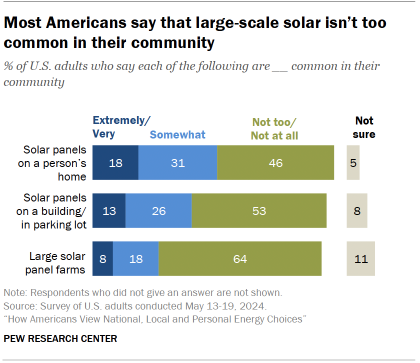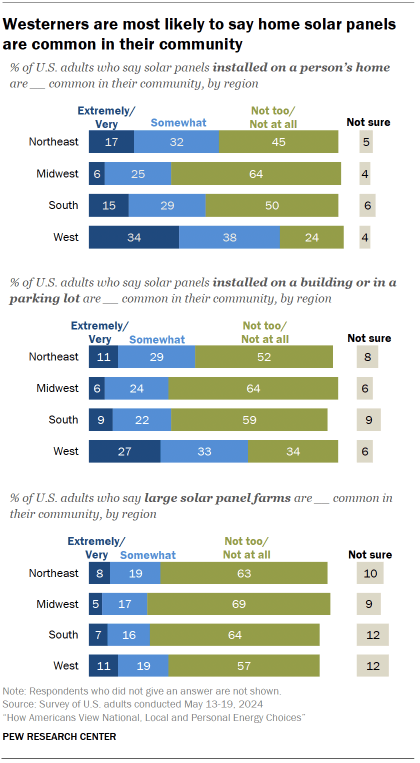Large-scale solar power generates about 4% of all electricity in the U.S. Capacity has almost doubled in the last year. Smaller-scale installations – including solar panels on things like homes and public buildings – have also seen sharp growth.

The new Center survey asked Americans how common three different types of solar panel developments are in their community: small-scale solar development on homes, somewhat larger solar developments on buildings and in parking lots, and large-scale solar panel farms.
Americans report that home solar is the most common of these three types in their community.
- 18% of Americans say solar panels are extremely or very common on a person’s home in their community. An additional 31% say solar panels are somewhat common.
- 13% say solar panels are extremely or very common on buildings or in parking lots in their community; 26% say this is somewhat common.
- 8% say large solar panel farms are extremely or very common in their community and 18% say they are somewhat common. A majority (64%) say large-scale solar developments are not too or not at all common.
There are only modest differences in perceptions of solar panel development between Republicans and Democrats.
In a 2023 Pew Research Center survey, 7% of homeowners said they have installed solar panels on their home; an additional 28% said they were seriously considering it.

Westerners are most likely to report that home solar panels are common in their community. About one-third of Westerners say solar panels installed on a home are extremely or very common in their community.
In contrast, just 6% of Midwesterners say home solar panels are extremely or very common in their community. A majority (64%) say they are not too or not at all common.
The perception of solar development in the U.S. is consistent with geographic data on solar panel installation. According to the U.S. Energy Information Administration’s Residential Energy Consumption Survey, the West leads the country in small-scale solar installments, followed by the Northeast, the South and the Midwest.
The regional differences are more modest when it comes to perceptions of large-scale solar development.




